Cleaning Performance
Both vacuum robots have a composite cleaning system. On the one hand, a set of brushes collect dirt and debris around and below the robot. On the other hand, a vacuum pump sucks hair and dust. However, the Roomba and the Botvac have different designs that we discuss below. We also analyze and compare their cleaning performance.
Brushes Layout and Corner Cleaning
The D7 includes many nice features that make Neato Robotics’s vacuum robots the most serious challengers of the mighty Roomba. First, there is the patented D-shape. It allows the main brush get closer to the wall, as opposed to the round Roomba. Figure 1 shows the lower sides of the Roomba 980 and the Neato Botvac D7, exposing their brushes. Walls are colored in orange. The area cleaned by the Roomba 980 is red, while the one covered by the Botvac D7 is green.
The Roomba’s brush is located at its center, between the wheels. It is then far from the side and the front wall. To improve cleaning, Roomba’s designers introduced a secondary brush on the side. This side brush covers the space to the side wall.
The Neato’s front being square, it allows hosting a main brush that is almost as wide as the vacuum robot itself. to the Roomba. A second advantage of have the main brush at the front of the robot is that it is closer to the front wall.
Figure 2, compares areas covered by each robotic vacuum. We have stacked the area covered by the Roomba 980 in dashed red line, on top of the one covered by the Botvac D7. Obviously, the Botvac D7 Connected cleans a larger area than the Roomba in a single pass. So, for a given room, and if the two vacuum robots run at the same speed, the Neato will finish cleaning before the Roomba. Having said that, we must admit that the Roomba 980 is slightly better at gathering hair at the edges. But, the Neato D7 has its main brush very close to the wall which is better for sucking all the dust at the corners.
Suction Power and Noise Level
As for traditional vacuums, suction power is critical to vacuum robots cleaning performance. However, robot designers face a challenge here. Vacuum robots are cordless, and rely on a battery. More suction power means draining the battery more quickly. However, both Roomba 980 and Neato D7 Connected are supposed to operate 120 minutes on a single charge. So, there is definitely a tread-off between power consumption and how long does the battery last.
Another important factor related to suction power is the noise level. Increasing suction means increasing noise. Actually, noise is also, generated by rotating brushes.
To deal with both with the battery constraints and the noise level, Roomba 980 and Neato D7 have two energy/noise level modes: Turbo mode and Eco mode. In Turbo mode, they operate at full power. This means maximum cleaning performance, but at a cost of maximum noise and shorter battery run-time. In Eco mode, the two vacuums consume less lower and make less noise. But, the cleaning is not as good as in the Turbo mode. Having said that, let’s have a look on the actual figures of both robots.
| Suction
(The Higher the Better) |
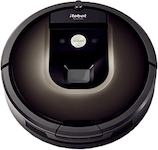 Roomba 980
Roomba 980 |
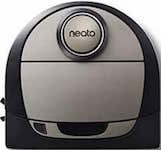 Neato Botvac D7
Neato Botvac D7 |
| Turbo Mode |
669 ft/min |
767 ft/min |
| Eco Mode |
453 ft/min |
649 ft/min |
Table 1. Suction Power of the Roomba 980 vs the Neato Botvac D7 Connected
Table 1 (above) shows that the Neato D7 has higher suction than the Roomba 980 in all modes. In Turbo mode the D7 suction is 13.6% higher than the one by the Roomba. In Eco mode, the ratio is even larger, since the Neato does 36% better than the Roomba. Interestingly, the D7 suction in Eco mode is almost equal to the Roomba’s in Turbo Mode!
| Noise Level
(The Lower the Better) |
 Roomba 980
Roomba 980 |
 Neato Botvac D7
Neato Botvac D7 |
| Turbo Mode |
78 db |
70 db |
| Eco Mode |
69 db |
66.5 db |
Table 2. Noise Levels of the Roomba 980 vs the Neato Botvac D7 Connected
Table 2 (above) shows that the Neato D7 makes less noise compared to the Roomba 980 in all modes. The Roomba in Eco mode is almost as noisy as the Neato in Turbo mode!
To sum up, the Neato D7 does better than the Roomba 980 with regard to suction power and noise. You can run the D7 in Eco mode and achieve the same cleaning quality as the Roomba in Turbo mode. What’s more, in Eco mode the D7 will make less noise, while saving the battery for longer operation which is ideal for large homes.
Bumping Into Furniture vs. Systematic Cleaning
Having robot autonomously navigate and clean different homes is really challenging. Each home has its own configuration. Rooms, walls, doors, and furniture are different in number, place, shape and size. Not mentioning toys, pet bows or other objects on the floor.
To deal with this complexity, early Roombas relied on random navigation. Basically, it moves in a straight line until bumping into an obstacle. It rotates away at a random angle. This process is repeated for some time. The resulting behavior looks anarchic and definitely unnatural. But, eventually the Roomba does clean the full floor.
Mapping the Floor for Systematic Cleaning Pioneered by Neato
From its inception, Neato took the more ambitious road to perform systematic cleaning. It requires having a map of the floor. This is why all Neato robotic vacuums have a 360 degrees laser range sensor onboard (see Figure 3). This laser scanner is capable of precisely measuring the distance between the robot and all obstacles. Thanks to a
SLAM algorithm, the Neato turns distances to obstacles into a map (see Figure 4).
Since Neato vacuums map places to clean, they are capable to localize very precisely. They know, where is the furniture to avoid, which areas were cleaned and which ones were not. Thus, likewise its predecessors the Botvac D7 performs systematic cleaning. The behavior is close to what humans do with a manual vacuum cleaner. So, you can predict what is the next spot that the D7 will be cleaning. As a bonus, since the D7 knows where are obstacles, it does avoid furniture. This is a plus compared to vacuums performing random navigation, that bump into objects.
Roomba 980 Camera-Based Systematic Cleaning
After several years of relying on the robust though old random navigation, Roomba 900 series switched to systematic cleaning. They rely on a camera oriented 45 degrees towards the ceiling (see Figure 5). Based on pictures collected by this camera, the Roomba 980 is capable to locate itself and detect most obstacles. The 980 can then map your home and clean it in a systematic fashion just like like the D7.
Camera-based vs Laser-based Mapping and Systematic Cleaning
Although both robotic vacuums are capable of systematic mapping, there are some differences. Each manufacturer did chose a different technology with its pros and cons.
Neato D7 relies on a laser range sensor located on top of the robot. This means that the D7 is slightly thicker than the Roomba 980. The Roomba can go under some furniture that might be to low for th Botvac D7. However, the D7 can map a totally dark place, while the 980 won’t. Indeed, the 980’s camera requires some light to operate properly. The Roomba will still be able to do the cleaning, but in a degraded mode.
Another advantage of the Neato over the Roomba, is that D7 has persistent maps. The Roomba 980 has to reconstruct a map upon each cleaning cycle. While, the D7 builds the map only the first time it operates, and then stores it for future cleaning sessions. Beside speeding up the cleaning a bit, this persistence allows setting No-Go lines, presented below.
Telling Your Robot Where to Clean
Roomba’s Virtual Wall Barriers
To restrict cleaned areas, the Roomba 980 is shipped with two
Virtual Wall Barriers. The Roomba bounces away when it perceives the infra-red light emitted by those two little pillar-shaped devices.
A virtual wall barrier operates on battery, and has two modes. In
Virtual Wall Mode, it blocks openings of up to 10 feet, keeping Roomba in the rooms you want cleaned and out of the ones you don’t. In
Halo Mode, it creates a 4-foot diameter keep out zone around items you want to protect.
Neato’s Boundary Marker
With the D7, you get a roll with an 8 feet long boundary marker. This marker is a thin passive magnetic strip. You can cut it in many parts to fit the width of doors or the length of areas you want to restrict.
All Neato vacuum robots embed a magnetic sensor. So, the Botvac D7 turns away, whenever it runs into a boudary marker. Since the boundary marker is magnetic, it is battery free. Just set it and forget it. It requires no maintenance, and no waste. Thus, it makes the BotVac more
eco-friendly than the Roomba.
Neato Botvac D7 Virtual No-Go Lines
Virtual No-Go Lines is one of the novelties of the D7 (see Video 2 above). This unique feature is a digital complement to the boundary marker. It combines Neato’s mobile app with the ability of the Botvac D7 to finely localize itself within your home.
It’s very simple to use. All you have to do is to open the Neato’s app on your smartphone. Then, draw Virtual No-Go Lines around places you want your Neato Botvac to avoid. Those can be pet bowls or a pile of toys. Your robot knows where to go to avoid getting stuck.
Customer Service
The quality of customer service is an important criterion when choosing a robotic vacuum. However, this criterion is not specific to one robot. It instead measures how good is the brand at serving its customers.
In
our review of vacuum robot brands, we had collected user overall satisfaction for 39 robotic vacuum cleaners from 12 different brands. Each of the 9515 users who responded provided a score between 1 and 5 that rates their experience with the vacuum robot and the customer service of the manufacturer.
It turns out that iRobot (the Roomba maker) offers a better customer service compared to Neato Robotics. Indeed, in our brand comparison, iRobot ranked
1st, with a score of
4.1 out of 5. Neato comes
2nd with a score of
3.9 out of 5.
Review Summary
Cleaning Modes Review Summary
| Cleaning Modes |
 Roomba 980
Roomba 980 |
 Neato Botvac D7
Neato Botvac D7 |
| Systematic Cleaning |
 |
 |
| Systematic Cleaning in the Dark |
 |
 |
| Recharge & Continue |
 |
 |
| Spot Mode |
 |
 |
| Focused Cleaning |
 |
 |
| Auto-adjust Cleaning Mode to Floor Type |
 |
 |
| Extra Care for Delicate Furniture |
 |
 |
| Quiet Cleaning Mode |
 |
 |
| Score |
6 |
7 |
Table 1. Cleaning Modes Review of the Roomba 980 vs. the Neato Botvac D7 Connected

 Buy Roomba 980 from Amazon
Buy Roomba 980 from Amazon  Buy Neato D7 from Amazon
Buy Neato D7 from Amazon 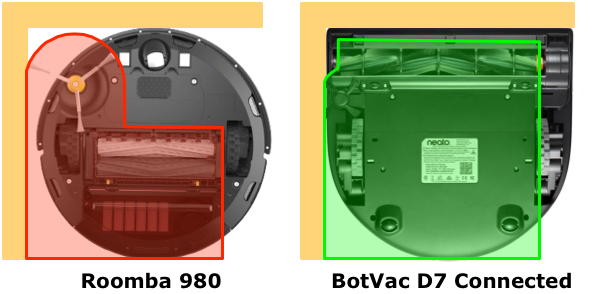
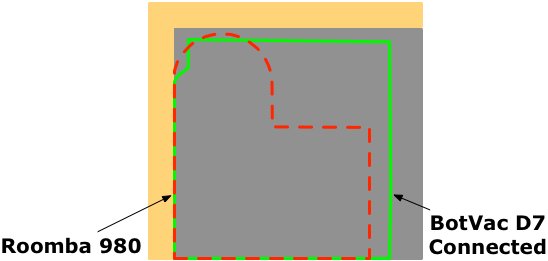
 Roomba 980
Roomba 980 Neato Botvac D7
Neato Botvac D7 Roomba 980
Roomba 980 Neato Botvac D7
Neato Botvac D7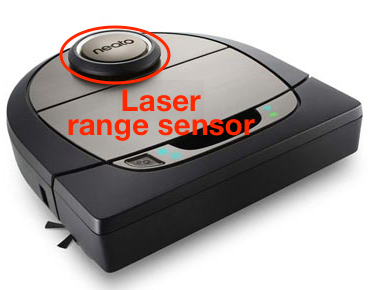
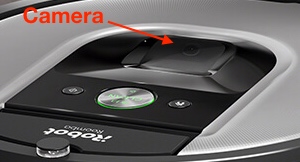
 Roomba 980
Roomba 980 Neato Botvac D7
Neato Botvac D7















 Buy Roomba 980 from Amazon
Buy Roomba 980 from Amazon  Buy Neato D7 from Amazon
Buy Neato D7 from Amazon  Roomba 980
Roomba 980 Neato Botvac D7
Neato Botvac D7

















 Buy Roomba 980 from Amazon
Buy Roomba 980 from Amazon  Buy Neato D7 from Amazon
Buy Neato D7 from Amazon  Buy Roomba 980 from Amazon
Buy Roomba 980 from Amazon  Buy Neato D7 from Amazon
Buy Neato D7 from Amazon  Roomba 980
Roomba 980 Neato Botvac D7
Neato Botvac D7 Buy Roomba 980 from Amazon
Buy Roomba 980 from Amazon  Buy Neato D7 from Amazon
Buy Neato D7 from Amazon 
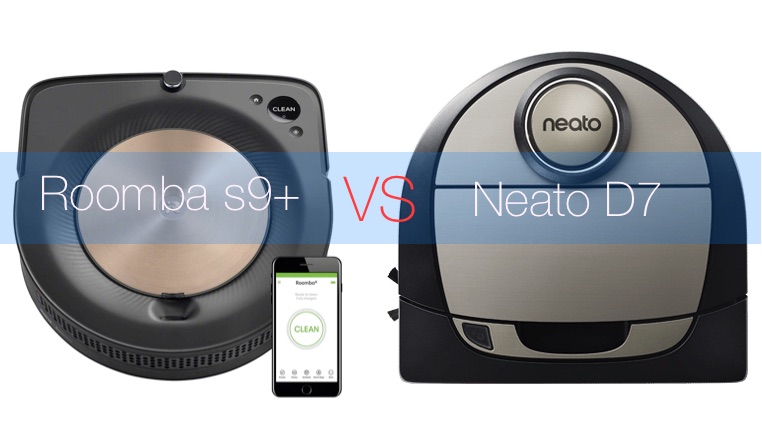
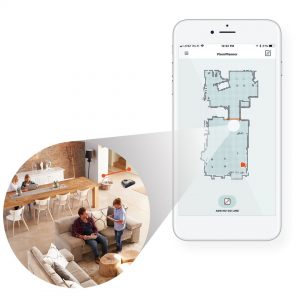
14 Comments
Longevity: which is better the Roomba 980 or the botvac D7? This is regarding reliability and maintenance.
The answer is not easy. Roomba 980 is on the market for few years now. There is no doubt on its reliability and durability. The D7 is on the market for only some months now. But, it’s the successor of the Botvac connected series (D3 and D5).
Brandwise, iRobot is making Roombas for a long time. So, iRobot has much more experience in making vacuum robots than Neato robotics. Though Neato is more innovative than iRobot. This might be an advantage, but also a weakness. In this innovation race, some bugs might slip in. But, so far Neato has been reactive and releases updates with fixes and enhancements.
I tried both brands for extensive periods of time (months/years) with equal satisfaction for myself and my family. This is not a statistical evidence though.
People tend to prefer Roomba to Neato, but I believe this is because Roomba is the first, and most renown brands.
A detail that might be annoying in the long run is the thickness of the vacuum robots. Neato D7 is a bit thicker. It’s 3.9 inches high, while the Roomba 980 is 3.6 inches high. You should check if the vacuum robot you choose can go clean under your furniture.
I have owned 2 Neato d5’s. The first lasted just 1 year before laser system broke. They sent me a new one in June of 2018 it lasted till Dec. 2018 and had the same issue. I really wanted to like Neato because they have made some massive updates to there app and how you control the vacuum but two breaks of the same part is not good especially one after 3 months. My next one will be a Roomba
Thank you Joey for your input on the Netao D5.
The current best Roomba is the i7+. It does better than the Neato D7, since it is capable of self-cleaning. This means less maintenance. Just set it and forget it.
However, Roomba i7+ is rather expensive. The next best Roomba is the 980 discussed above. It’s price has significantly dropped. You can buy it for less than $500.
I have a iRobot 780. Used 5 yrs. it’s great. I re entry wanted an upgrade and order the iRobot 980. Nice. Loved most everything about it. Yet, it didn’t map rooms which is important to me for high traffic areas. I am considering trying neato D7. Because of the room mapping and the no go zone.